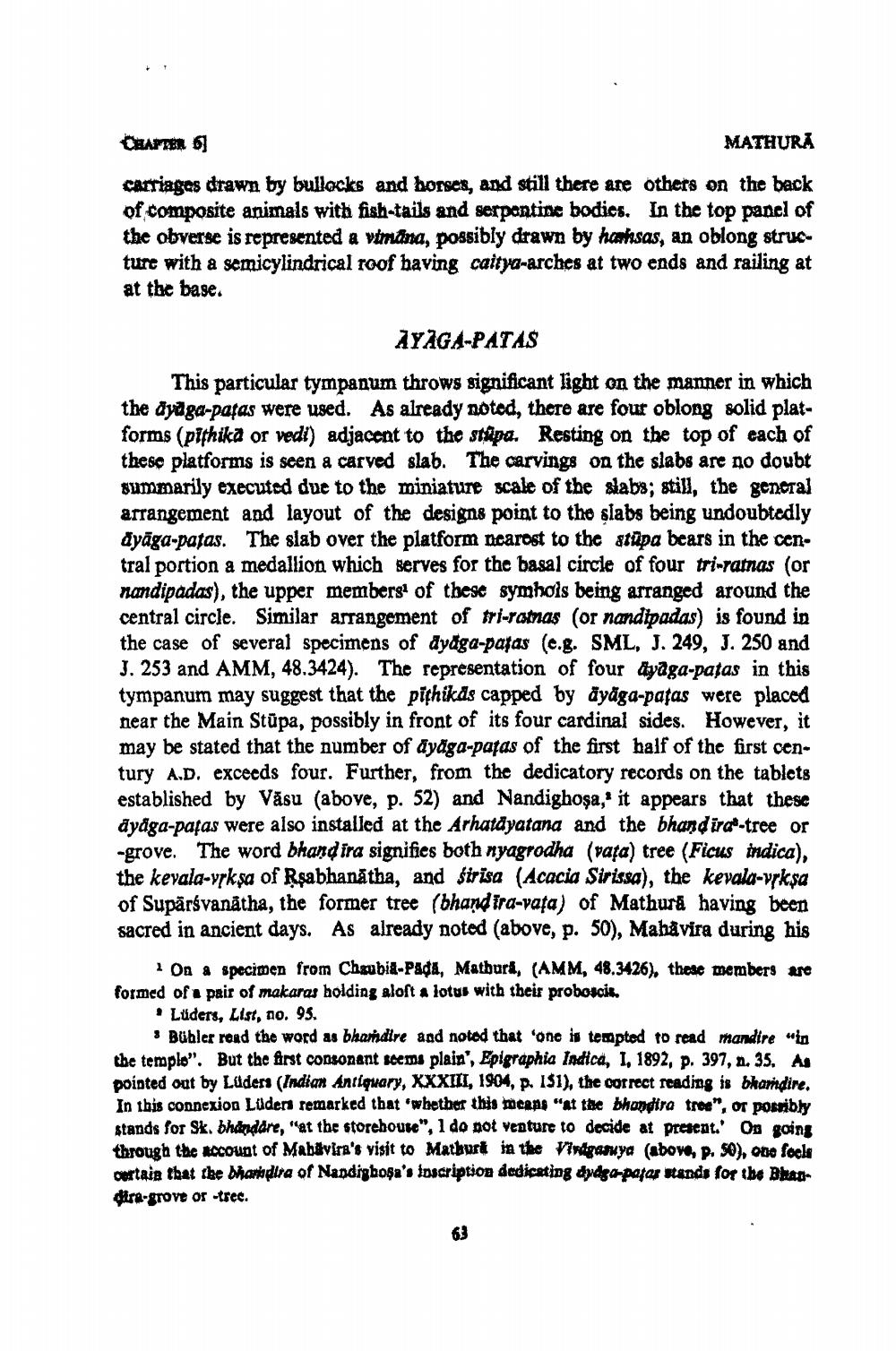________________
CHAPTER 6
MATHURA carriages drawn by bullocks and horses, and still there are others on the back of composite animals with fish-tails and serpentine bodies. In the top panel of the obverse is represented a vimana, possibly drawn by hahsas, an oblong strueture with a semicylindrical roof having caitya-arches at two ends and railing at at the base.
AYAGA-PATAS
This particular tympanum throws significant light on the manner in which the dydga-pafas were used. As already noted, there are four oblong solid platforms (pithika or vedt) adjacent to the stúpa. Resting on the top of each of these platforms is seen a carved slab. The carvings on the slabs are no doubt summarily executed due to the miniature scale of the slabs; still, the general arrangement and layout of the designs point to the slabs being undoubtedly ayāga-patas. The slab over the platform acarost to the stūpa bears in the central portion a medallion which serves for the basal circle of four tri-ratnas (or nandipadas), the upper members of these symhois being arranged around the central circle. Similar arrangement of tri-ratnas (or nandipadas) is found in the case of several specimens of dyaga-pafas (c.g. SML, J. 249, J. 250 and J. 253 and AMM, 48.3424). The representation of four dyaga-patas in this tympanum may suggest that the pichikds capped by āyāga-patas were placed near the Main Stūpa, possibly in front of its four cardinal sides. However, it may be stated that the number of ayaga-pafas of the first half of the first century A.D. exceeds four. Further, from the dedicatory records on the tablets established by Văsu (above, p. 52) and Nandighosa,' it appears that these dyaga-pafas were also installed at the Arhatdyatana and the bhandirat-tree or -grove. The word bhandira signifies both nyagrodha (vata) tree (Ficus indica), the kevala-yskṣa of Rşabhanātha, and strisa (Acacia Sirissa), the kevala-vrksa of Supārsvanátha, the former tree (bhand ira-vata) of Mathurà having been sacred in ancient days. As already noted (above, p. 50), Mahavira during his
On a specimen from Chaubik-PAÇA, Matburi, (AMM, 48.3426), these members are formed of a pair of makaras holding aloft a lotus with their proboscis.
• Lüders, List, ao. 95.
Bühler read the word as bhandire and noted that one is tempted to read mandire "in the templo". But the first consonant seems plain', Epigraphia Indica, I, 1892, p. 397, n. 35. As pointed out by Lüden (Indian Antiquary, XXXIII, 1904, p. 151), the correct reading is bhandire. In this connexion Lüden remarked that whether this means "at the bhandira tree", or pomibly stands for Sk. bhanddre, "at the storehouse", 1 do not venture to decide at present.' On going through the account of Mabavira's visit to Mathurt in the Vintgarmya (above, P. 50), one foel certain that the Dhardlra of Nandigbosa's Inscription dedicating dydga-pator stands for the Bhatt dire-grove or trec.




